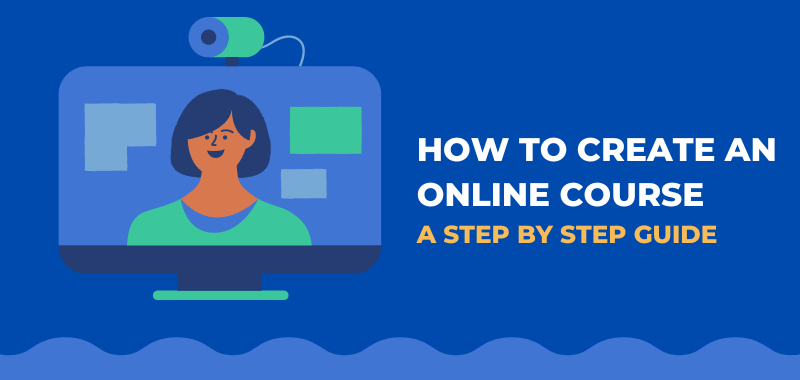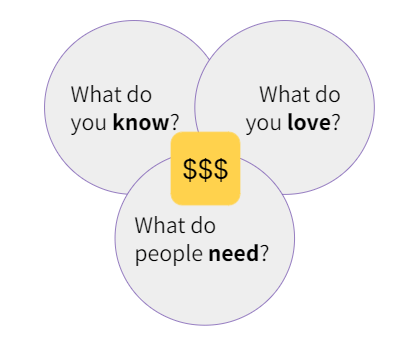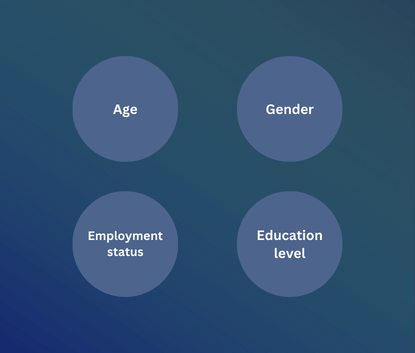Are you wondering how to create an online course in 2024?
Do you want to make money selling online courses?
Hands down, you’ve landed on the right page.
Online learning, commonly referred to as e-learning, is one of the fastest-growing industries and has an expected CAGR of 20% from 2022-2028. Consequently, the eLearning industry will be a $300 billion industry within the next five years.

So, congratulations on taking the first step toward your bright future.
I am sure you have invested a lot of money and time in educating yourself and learning new skills. It’s time to share your knowledge with the world in the form of an online course and make some money on the side.
In this post, we have covered everything you need to know to create your own online course, promote it, sell it, and make money with your course.
So, read this post till the end to learn how to monetize your expertise with ease.
Are you ready to start building your own courses? Let’s do it!
Table of Contents
- 10 Major Steps for Creating a Successful Online Course
- 1. Choosing The Right Topic For Your Course
- 2. Decide Your Target Audience
- 3. Create Course Curriculum & Map Magnetic Learning Outcomes
- 4. Creating Your Course
- 5. Pricing & Monetization
- 6. Publishing Your Course Online
- 7. Ongoing Marketing
- 8. Cultivate a Learning Community
- 9. Gather Feedback
- 10. Update Your Course Over Time
- FAQs
- Final Thoughts on Creating an Online Course
10 Major Steps for Creating a Successful Online Course

1. Choosing The Right Topic For Your Course
The first and foremost step to making your course a big hit is to find out an excellent idea for your course.
This is something that can decide the success or failure of your course, so should not be taken lightly at all.
You might be thinking of simply building a course on the subject in which you have top-notch knowledge, but that’s not how it works.
To find your profitable online course topic, consider the below mentioned three important aspects;
- The subject you know well.
- What’re you passionate about?
- Are people looking for advice on that subject?

Knowing about a topic is not enough if you don’t love what you do. So, choose a topic that you can work on for years, passionately.
Next, you should research whether the topic has enough demand online and if the course will resolve a problem for a group of people online.
To do so, you may take advantage of SEO tools like Semrush and Google Trends. These tools will help you understand the search volume and the trend of the specific topic.
Furthermore, you can check out online learning platforms such as Udemy, Skillshare, etc. to know what most online learners are looking for in your niche.
If you find that people are keen to learn your topic and the trend is upward (not downward at least), you can settle on that course topic.
If not, then you can think of another topic.
Remember, there are endless possibilities, and you can teach almost anything online.
If you’re struggling to find one, check out this massive list of top trending course topic ideas or the video below.
2. Decide Your Target Audience
This is another important step and can do wonders for your online course.
Creating your content according to the audience you are going to serve is crucial because not every type of audience will connect with your course and find it worth it.
So, before you actually start gathering your course content and recording, it’s important to understand the demographics (age, gender, average education level, employment status, etc.) of your target audience.

Additionally, you can target audiences based on seasonality. For instance, baking courses will be more appealing during the festive season.
Another factor could be intent, for example, designing a course around SaaS application development for software developers looking to make a career transition is a good course idea.
Furthermore, you can also take advantage of social media platforms like Facebook groups, LinkedIn, and Instagram to identify a target audience for research.
These factors will help you determine the exact angle of your course.
As a result, once your course reaches your target audience, they will find it more engaging and fruitful.
3. Create Course Curriculum & Map Magnetic Learning Outcomes
The next step is to create a detailed outline for your course.
What content will be covered and how much time will be spent on each part?
To do so, break down the main topic into modules and segment them further into a list of the different lessons.
Simply, write down them on a piece of paper or use templates that are available online for online course creation.
Just make sure that all the lessons are in a logical order to ensure a smooth learning process.
Also, don’t forget to map magnetic course outcomes on your course page prominently.
Framing outcomes will help your students understand what material your course has and what they can get out of the course.
This way, only the right students will join your course which will result in greater satisfaction, better course completion rates, and lower refund requests.
For example, an online course outline for a blogging course could be like this;
Lesson #1: Blogging Basics
Lesson objective: Students will get a clear-cut idea of what is blogging all about.
Topics covered:
- What is Blogging?
- Why should you start Blogging?
- What is a Blogging Niche?
Lesson #2: How to get a blog online?
Lesson objective: Students will learn how to buy a domain name and web hosting, and start a blog.
Topics covered:
- Pick a blog name
- How to register a domain name?
- Different types of web hosting
- WordPress installation
Lesson #3: Blog SEO
Lesson objective: Students will understand the importance of SEO, and will be able to rank #1 on Google search.
Topics covered:
- What are keywords?
- On-page SEO, Off-page SEO, and Technical SEO
- How to use SEO tools like Semrush?
4. Creating Your Course

Finally, it’s time to create the actual course material.
Though there are several mediums, here, we will discuss video courses as videos are the most prominent form of communication.
Having said that, we would also recommend you bundle your video lessons with other study material such as eBooks, audio recordings, presentations, etc, that is relevant to your course structure and help your students get results.
Filming
To film your videos, you can record yourself speaking in front of a camera or record your computer screen while talking in the background, or both.
If you’re talking head-style video, use a decent camera and mic that lets you create professional-looking content. For screencasting & screen recording, Loom is a great software to consider.
Editing
Once you’re done with recording, give yourself enough time to edit your raw footage to convert it into engaging lessons.
Add closed captions and include transcripts to your videos to make the course more accessible and easier to follow.
You can also consider adding background music if applicable.
To do so, you can use video editing software like Apple iMovie, Adobe Premiere Pro, Filmora, etc. based on your preferences and budget.
Class assignments
Adding assignments at the end of each of your lessons is also recommended so that students can sink in newly gained knowledge effectively. It could be a downloadable PDF file, online quiz, or learning game.
Pro Tip: If you already have blog posts or YouTube videos, created a webinar, or hosted a podcast about the same subject for your business, go back and repurpose the existing content into your online course to save a ton of valuable time.
5. Pricing & Monetization

Once you’ve finished the content creation part, the next step is to price your online course and monetize it right.
First, let’s talk about different ways to sell your online courses which you can choose depending on your business plan.
One-time Fixed Fee: This is the most common method where you give access to your full course for some upfront charges. After successful payment, users can log in to the member’s area within your site to access the content.
If you’re going to opt for this option, make sure you take advantage of the drip course content for an enhanced learning experience.
Individual Lessons: Selling your online course on a video-by-video basis is another good option. Here, you can allow users to download the video to rewatch the content at any time.
Channel Subscription: You can create a subscription model where users will be able to access the premium content by paying a nominal monthly fee.
One-On-One Real-Time Lessons: In addition to that, teaching 1:1 is also a great approach to meet your student’s specific learning level.
Now let’s talk about what your online course fee should be, here are the best ways to make a firm decision.
Competitor Prices: Identify competitors in your industry and find out the average course price of the competitors on your topic.
Creation Time: Analyse how much time you devoted to creating the course and come up with a good balance between time invested and profits.
Course Value: Consider the amount of value your students will be taking from your course. How much money can they earn based on the skills you taught them?
If you believe the skills you’re teaching are high-paying and your students will financially justify taking the course, it makes sense to charge a higher price.
General Practice: Usually, you will see online courses starting at $100 and going to $10,000 depending on the topic. However, if a course is priced on the higher side, people assume that it will be packed with a lot of value and perceive it as “good”.
Moreover, the people who invest more money in any course are likely to be more eager to finish the course to take away massive learnings and get a better ROI.
Therefore, don’t hesitate to charge a reasonable amount of money for your courses, especially if they are detailed enough.
6. Publishing Your Course Online
After you’re done with curating your course material, finally, it’s time to select an appropriate delivery channel and bring your course online.
Generally, there are three ways by which you can host your courses online which we’ve discussed below;
1. Online Course Platforms/LMS
This is the most convenient method to distribute your online courses.
These platforms give you access to all the tools that make uploading, marketing, and selling your online courses a breeze.
They also come with an integrated payment gateway that leads to worry-free business management.
On top of that, you’re backed with best-in-class support so that you can start and grow without all the pain.
2. Plugins
WordPress offers the greatest flexibility to host online courses.
So, if you already have a WordPress website then you may consider this option as well.
There are several plugins available on the internet that you can install in just one click and turn your website into an online education membership site.
3. eLearning Marketplace/Community
If you’re publishing an online course for the very first time, eLearning marketplaces such as Udemy, Skillshare, Coursera, etc. can do your job perfectly.
These platforms have a massive audience base and a good reputation in the industry, helping you to connect with a community of eager learners.
Apart from that, you may also plan to build your own custom-branded app which is another great way for coaches & creators to sell online courses.
Whichever method you’re going to opt for, make sure to check out our dedicated post on the best online course platforms where we have discussed the top reliable platforms in each category.
7. Ongoing Marketing

Congratulations, after putting in a lot of time and creative energy, you’ve finally made your course live.
But if you think your job is finished here, sadly you’re mistaken.
In fact, the real work begins now!
You will have to take care of the marketing process to generate leads and get those course registrations.
There are several ways to market your online course, here are some of the effective ways to promote your course and increase sales:
Consider Pre-selling Your Course: Offer early bird offers to make people pre-register for your online course even before you’ve launched it.
Create a Sales page: Create a stunning landing page to influence people to enroll in your course.
Email Marketing: There is no better way other than email marketing as it offers the highest ROI. So, if you have got a sizable email list, launch email marketing campaigns.
Use Lead Magnets: Use lead magnets like a free mini course, PDF, etc. to make your students purchase your main course.
Social Media: Share your course over relevant social media platforms. LinkedIn could be a great place to start as most people have a professional mindset here. You may also consider Facebook groups and Twitter.
Paid Ads: You may go with paid advertising options such as Facebook Ads, Google Ads, Youtube Ads, and so on.
Blog Posts: You can start a blog and publish posts around your course topic to build authority and boost your SEO.
YouTube Channel: Starting a YouTube channel is another great idea where you can promo videos to create interest in your course.
Reviews & Testimonials: Ask your past students for reviews and positive testimonials to social proof your course and boost online course sales.
Add Pop-up: If you own a website, you can add a lightbox pop-up to divert traffic to your course.
Collaborate with Third-Party Sites: You can also collaborate with other websites in your niche to promote your course.
Influencer Marketing: Partner with leading people in your niche to reach a wider audience.
Affiliate Marketing: Launch your own affiliate program and let others promote the course on your behalf.
Podcast: A podcast is another great medium to spread the word about your course.
Webinar: Conduct webinars to educate people on what they can learn from you and earn the trust of your target audience.
Work with Instructors: Collaborate with other instructors to co-teach and capture each other’s audience.
Go Multilingual: Make your course in multi-languages to show your presence in new markets and reach a wider international audience.
Remember marketing your course is vital and an ongoing process.
Many course creators got failed because of less effort on the marketing part.
So, make sure you don’t repeat this mistake and have a proper marketing plan for your online course!
8. Cultivate a Learning Community

Next, you have one more important job to do: building a dedicated community of students.
Learning is a social process and it becomes more enjoyable when direct interaction is involved.
Unfortunately, with online courses, you don’t get the privilege to interact with other people.
To enhance the interest and excitement around your class, you should create a dedicated community around your course that allows you to interact with your students, and your students to interact with each other who are on the same journey.
You can also utilize your online community to spread the word about your upcoming courses or other learning opportunities that your audience might find beneficial.
Therefore, nurturing a dedicated community of learners will not only improve their experience but also contribute to the organic growth of your course.
Now, you might be wondering how to build an engaging community for your audience.
Well, online course platforms like Thinkific and Teachable offer a built-in community feature, allowing you to build a valuable network, connect with peers, and support one another’s growth and learning, without relying on third-party applications.
In case, your LMS does not have a community feature, here are two options you may consider to foster an active learning community for your course;
Social Media Groups: You can create private groups on social media. Facebook groups are quite popular to engage in. Alternatively, you may opt for creating a Twitter list.
Online Communication Platforms: You can take advantage of online communication platforms such as Slack and Discord to stay close to your audience.
9. Gather Feedback
Don’t forget to collect feedback (during and after the course) to improve your curriculum.
The more optimized your course would be, the more likely students will have a better experience. Eventually, they will recommend your course in their circle and enroll in future courses you may launch.
To do so, you can create short surveys to ask your students to share their experiences and rate the quality of your content to find out if there’s any scope for improvement.
This way, you can make a lot more data-driven decisions and continue running better and better courses.
10. Update Your Course Over Time
The last thing you need to focus on to make your course successful and a long-term asset is updating it over time.
Because we’re living in a digital age where skills and techniques are changing rapidly, there are more chances that your course material will not be as beneficial as it was at the time of launch.
So, make sure you keep updating or adding new course materials as skill demands change over time.
This way, your online course will not only continue to offer the best value to your current students but also the new enrollments.
So hereby you know the major steps involved in the online course creation journey.
We hope you’ve got a good idea of how to create an online course of your own, share it with the world, and make money at the same time!
FAQs
Here are the most commonly asked questions about creating online courses.
Indeed, online coaching is a profitable and scalable business model and a great source of passive income.
Here is how you can launch a successful online course of your own:
— Finalize a stellar topic for your course
— Create course content
— Pick a course platform to host it and make it accessible online
— Build a solid marketing plan, and
— Monetize it right
Thinkific, Teachable, Podia, LearnWorlds, LearnDash, and Passion.io are the most reliable platforms for building online courses.
With the help of all-in-one online course platforms like Teachable and Thinkific, anyone can upload and publish a course online without breaking the bank. These platforms cost around $50/mo and provide access to all the tools you need to host and sell online courses without the technical headaches.
Also Read:
- Teachable Free Trial 2024: Lifetime Access Without Credit Card
- Passion.io Free Trial 2024: 14-Day Exclusive Access
- Best AppSumo Deals 2024 [Save up to 98%]
- Semrush Free Trial (Get Free Access to Pro Account for 14 Days)
- Jasper.ai Free Trial: 7-Day Exclusive Access
- Link Whisper Discount Code 2024: FLAT $15 OFF
- Elementor Pro Discount Code 2024: Live Offer
- Hostinger Coupon Code 2024 – Up to 90% OFF
Final Thoughts on Creating an Online Course
Setting up an online course could be one of the most rewarding things you’ll ever do.
Yes, it takes a lot of hard work to create a worthy course, but if you’re willing to give your time and 100 percent effort, it can pay off in a big way.
Above all, getting glowing testimonials from your students about your courses is a great feeling.
So our advice? Go out there, follow the steps we have explained above, and get started today!
Did you find this post helpful? Have any more questions about creating online courses? Let us know in the comment section below.

Dear Amit,
I just finished reading your blog post and I wanted to take a moment to appreciate your insightful and informative writing. Your step-by-step guide and practical tips for creating an online course are truly valuable for anyone looking to create and sell their own course.
Your emphasis on identifying a niche, researching and understanding your target audience, and structuring the course content in a logical and engaging manner was particularly helpful. Your suggestions for using multimedia elements, such as videos and quizzes, to make the course more interactive and engaging were also great ideas.
Thanks for sharing this!